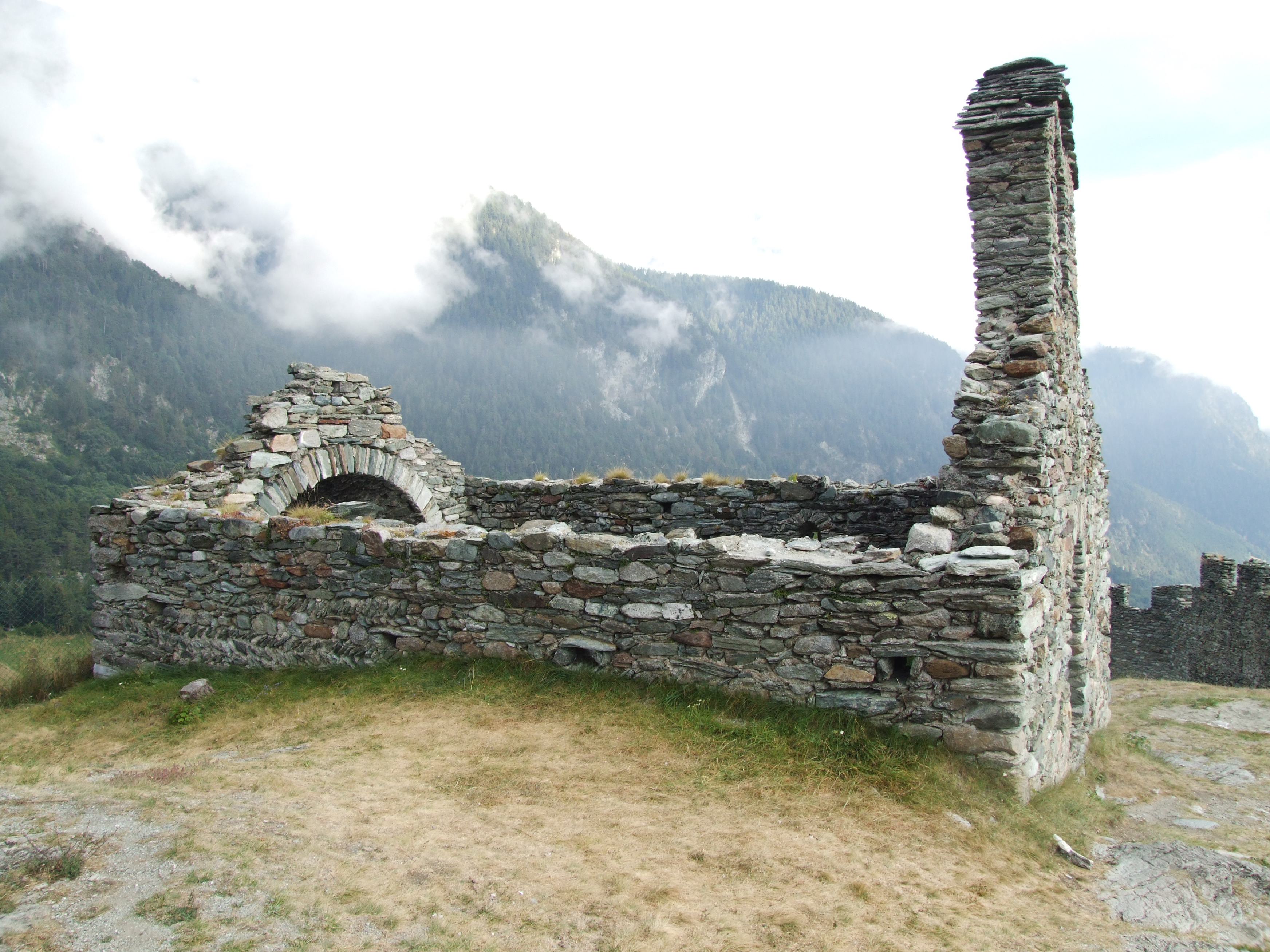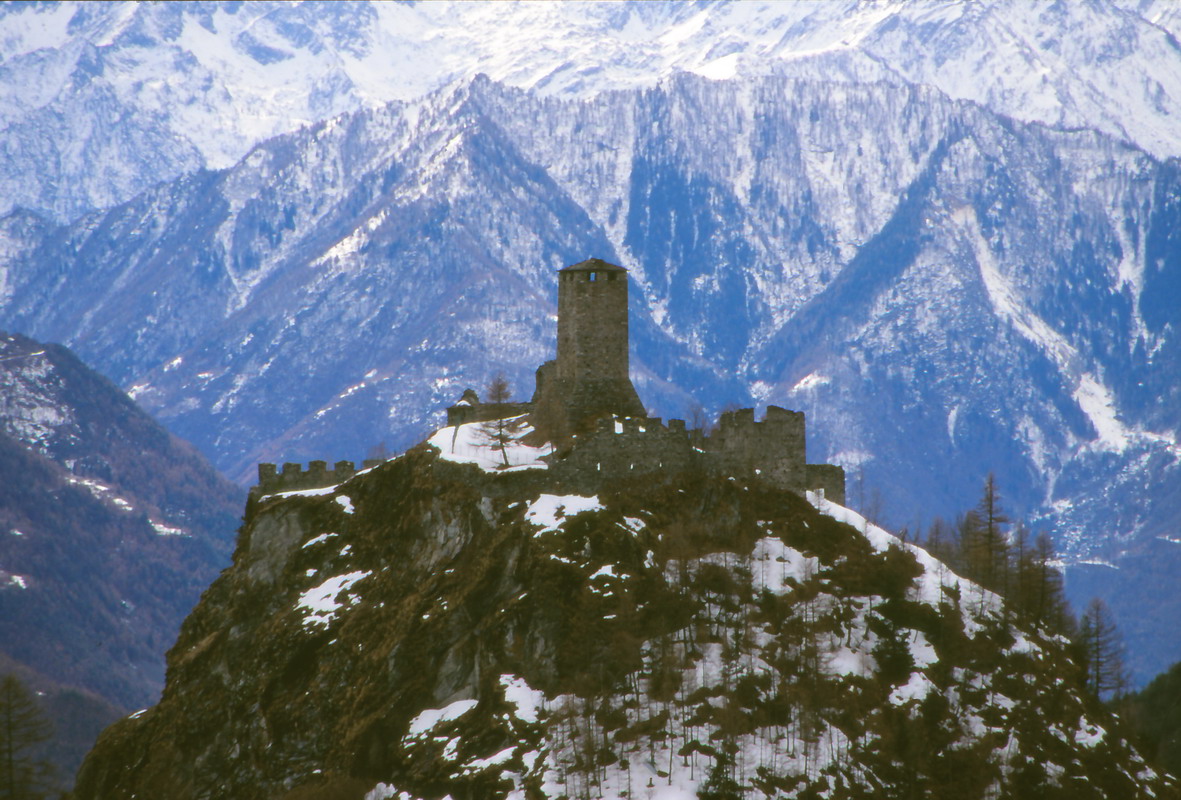
Graines Castle
This post is also available in:
 Italiano (Italian)
Italiano (Italian)
This castle stands on a high rocky promontory near the village of Graines and is surrounded by one of the most evocative landscape, that of the Brusson and the Ayas Valleys.
The castle was built in the X century by the abbots of the Vallesano Monastery of San Maurizio d’Agauno who, in 1263, handed the very manor and the surrounding lands to Gotofredo Challant, the grandson of Viscount Bosone from Aosta and a faithful servant of the Counts of Savoy.
During the XIV century, the castle belonged to Ibleto Challant, who had also acquired the lordships of Verrès and Issogne. Passed into the hands of his heirs and in 1615, it then witnessed the battle between Duke Carlo Emanuele I and a small enemy garrison. In the 1700s, the castle was abandoned and reduced to ruins. In 1841, upon the death of the last member of the Challant family (Countess Gabriella), what was left of the castle passed to the Passerin d’Entrèves, who later allow it usufruct to the Municipality of Brusson. In the early 1900s, thanks to D’Andrade and Giuseppe Giacosa, the fortress was thoroughly restored to preserve the original remains of the original defensive structure.
The strategic position of the castle has been exploited over the centuries to communicate using mirrors or flags with the tower of Bonot, the castle of Villa in Challand-Saint-Victor, and the valley floor. The structure offered maximum security to the nobles who lived there as it featured very small windows and the main entrance 16 ft above the ground level, accessible by a ladder that could be removed in case of danger.
The castle has an irregular shape perfectly fitted within the surrounding territory. It was initially encircled by a large wall, about 262×164 ft. Inside, there was a square tower – or a “donjon” – a small chapel and a barrel-vaulted cistern. The tower had at least three floors divided by wooden lofts. A rectangular residential building stood annexed to the tower.
The Romanesque chapel, dedicated to Saint Martin, consists of a single nave, about 26-ft long, and a semicircular apse. The main roof must have been made of wood and a mantle of stone slabs, but it has now completely collapsed, while only the stone wall perimeter still stands.
Some thorough archaeological investigations began in 2010, while the whole structure is currently being restored.
This post is also available in:
 Italiano (Italian)
Italiano (Italian)
Contatti
Ufficio del turismo, Piazza del Municipio 3 - 11022 Brusson(AO)
0125 300240
brusson@turismo.vda.it
Altre info
Gratuito



